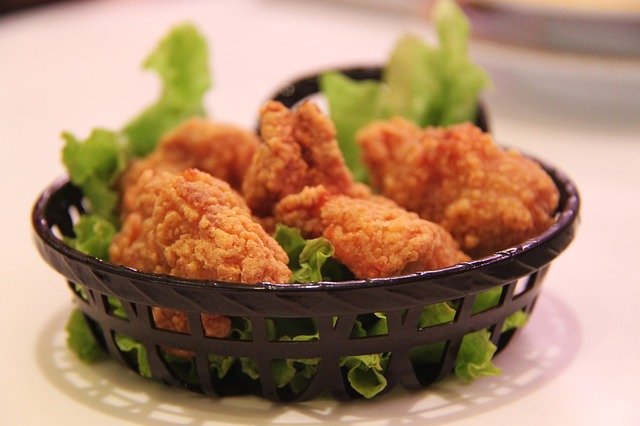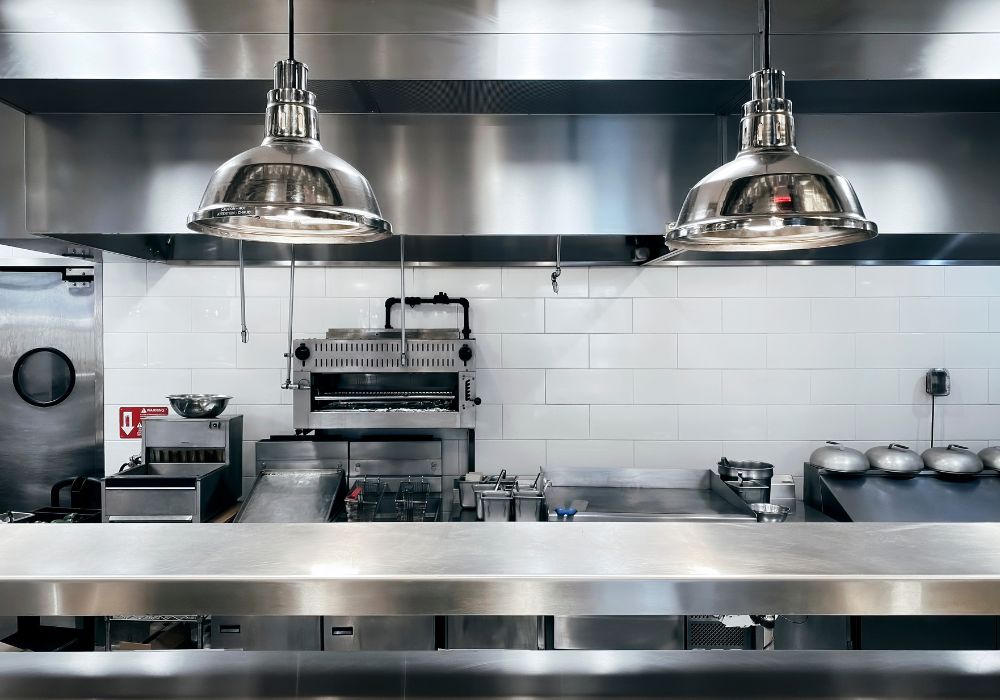Designing a commercial kitchen isn’t just about sleek fittings or top-of-the-line appliances—it’s about building a workspace that’s practical, efficient, and hygienic. A well-designed kitchen supports your team, keeps operations running smoothly, and ensures customer safety. Whether you’re rolling out a brand-new menu or frying nuggets from open to close, getting the layout right makes all the difference.
In this guide, we’ll walk you through some essential commercial kitchen design principles to help you sidestep common pitfalls and set up a space built for success.
Why Kitchen Design Matters
Your kitchen is the engine room of your food business, and its layout has a direct impact on performance. Poor design can slow down service, raise the risk of accidents, and even lead to costly health code violations. On the flip side, a smart, well-planned kitchen improves workflow, eases pressure on your staff, and keeps you on track with legal and safety standards. In short, successful kitchens are built on a balance of functionality and responsibility.
Start With the Layout
When it comes to commercial kitchen layouts and design, it’s important to think about the natural flow of work. How do ingredients enter the kitchen? Where are they stored? How are meals prepped, cooked, plated, and sent out?
Most efficient kitchens follow a logical sequence:
- Receiving (deliveries, inspections)
- Storage (dry, chilled, frozen)
- Preparation (veg prep, meat prep, etc.)
- Cooking (fryers, ovens, hobs)
- Plating/Service (pass, heated lamps)
- Cleaning/Washing up (sinks, dishwashers)
Each area should be clearly defined and well-positioned to avoid cross-contamination and backtracking.
Popular layouts include:
- Assembly line layout: ideal for high-volume, single-menu operations like fast food or fish and chip shops.
- Zone-style layout: separates the kitchen into specific zones for different tasks. Great for restaurants with varied menus.
- Island layout: equipment is placed in the centre with stations around it. Suitable for open-plan or large kitchens.
Some Factors to Consider When Designing a Commercial Kitchen
It’s tempting to only focus on big-ticket items, but with kitchens, the devil is always in the details. Here are some of the most important considerations for designing a commercial kitchen that will make all the difference:
- Space and movement: Make sure there’s enough room for staff to move safely and comfortably, even during busy shifts.
- Ventilation: Proper extraction systems are vital for air quality and temperature control.
- Lighting: A well-lit kitchen reduces accidents and ensures food is prepared correctly.
- Plumbing and drainage: Sinks, dishwashers, grease traps and mop basins all need to be positioned carefully.
- Electrical and gas supply: Plan ahead for safe and sufficient connections to all equipment.
- Storage: Don’t underestimate the need for dry goods, refrigerated, and freezer storage.
Meeting UK Regulations
A beautifully designed kitchen won’t get far if it doesn’t meet legal requirements. There are a number of commercial kitchen design regulations that UK businesses must follow to remain compliant.
These include:
- Food Hygiene Regulations: Surfaces must be easy to clean and disinfect. The layout should minimise the risk of contamination.
- Health and Safety at Work Act 1974: Requires employers to provide a safe environment for staff.
- Gas Safety (Installation and Use) Regulations 1998: All gas appliances must be installed and maintained by a qualified engineer.
- Workplace (Health, Safety and Welfare) Regulations 1992: Covers ventilation, lighting, temperature and washroom facilities.
- Fire Safety Order 2005: Kitchens must have fire exits, fire suppression systems and clear evacuation plans.
It’s a good idea to consult with your local council’s Environmental Health Officer (EHO) early in the design process. They can point out specific requirements for your area.
Hygiene Comes First
When it comes to food, hygiene isn’t optional—it’s absolutely essential. Your kitchen must be designed to support safe food handling at every stage. Here are a few key ways to make hygiene part of your kitchen’s foundation:
- Use non-porous materials for worktops and flooring—smooth surfaces are easier to clean and less likely to harbour bacteria.
- Install splashbacks behind sinks and cooking areas to prevent water damage and buildup of grime.
- Separate sinks for handwashing and food prep are a must to avoid cross-contamination.
- Provide accessible handwashing stations with soap and drying facilities. Frequent handwashing helps prevent outside contaminants from entering the kitchen environment.
- Keep raw and cooked zones clearly divided—use colour-coded chopping boards and knives to reduce the risk of cross-contamination.
Every detail matters, from waste disposal systems to the placement and height of shelving. Together, these choices help you maintain the rigorous hygiene standards your kitchen needs to operate safely and effectively.
Equipment and Oil Considerations
One thing many forget when planning kitchen equipment is the oil you fry in. For fish and chip shops and other fryers across the UK, using a high-quality oil like Frymax can make a massive difference to your product and your workflow.
Frymax’s long-lasting, additive-free palm oil is not only ideal for deep frying but also helps reduce build-up in fryers, prolonging equipment life. Choosing the right oil and ensuring your fryers are placed where they can be easily cleaned and maintained is part of smart commercial kitchen design.
Common Mistakes to Avoid
It’s easy to fall into a few traps when designing a kitchen:
- Overcrowding: Trying to cram too much equipment into a small space leads to inefficiency and safety issues.
- Ignoring workflow: If staff have to walk too far between tasks or cross over each other’s paths, you’ll lose time and patience.
- Underestimating cleaning: Make sure every corner and surface is accessible for regular deep cleans.
- Poor storage planning: Insufficient storage leads to clutter, which affects hygiene and speed.
- Forgetting staff welfare: Don’t overlook rest areas, toilets, or hydration stations.
From Floorplan to Fryer: Designing for Success
Designing a commercial kitchen is a balancing act between regulations, efficiency, space, and cost. But when done right, it becomes the engine room of your success. From choosing a layout to design regulations in the UK, every decision you make should support safety, hygiene, and productivity.
Frymax understands that a good kitchen isn’t just about what you cook with, but where you cook. That’s why our oil is trusted by generations of fryers and distributors to deliver consistently high-quality results with minimal fuss. Combine it with thoughtful design, and you’ll have a kitchen built to last.
If you’re considering a new fit-out or simply want to improve your current setup, use these design guidelines for commercial kitchen planning to steer you in the right direction. Your staff (and your customers) will thank you for it. For more information, don’t hesitate to get in contact with the helpful Frymax team.
Become a Frymax member today to gain access to exclusive content, expert frying advice and the chance to enter our fantastic competitions.






